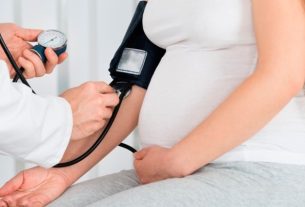Childhood urinary incontinence is when a child over 5 years of age is unable to hold their pee during the day or night, wetting the bed or wetting their panties or underwear. When urine loss occurs during the day, it is called daytime enuresis, while loss during the night is called nocturnal enuresis.
This situation can be a consequence of recurrent urinary infections, overactive bladder or due to the fact that the child often holds their pee because they don’t want to stop what they are doing, which ends up weakening the pelvic muscles and promoting incontinence.
Normally, the child can control peeing and pooping adequately, without the need for specific treatment, however, in some cases it may be necessary to carry out treatment according to the pediatrician’s instructions, which may involve the use of devices, medicines or physiotherapy sessions.

Symptoms of urinary incontinence
The main signs of childhood urinary incontinence are:
- Not being able to hold in pee during the day, leaving your panties or underwear wet, damp or smelling like pee;
- Not being able to hold in pee at night, wetting the bed more than once a week.
The age at which a child can control peeing during the day and night varies between 2 and 4 years, so if after this stage the child still has to wear a diaper during the day or night, you should talk to your doctor. pediatrician on this subject, as this makes it possible to identify the cause of incontinence and, thus, indicate the most appropriate treatment.
How to confirm the diagnosis
The diagnosis of childhood urinary incontinence is made by the pediatrician, through evaluation of the symptoms and when they started, the child’s health history, as well as injuries or congenital defects, kidney problems or urinary infections, for example.
In addition, the doctor should ask the child’s parents if there are any factors that could be causing stress, such as school, difficulties with friends, or the parents’ marital problems.
Make an appointment with your pediatrician to assess the cause of childhood urinary incontinence and begin the most appropriate treatment:
Taking care of your health has never been easier!
In order to better evaluate the child, the doctor should ask the parents to keep a diary, noting the amount of liquid ingested per day and the volume of urine eliminated, as well as situations that could lead the child to have an episode of incontinence.
In addition, the doctor should perform a physical exam on the child and evaluate for signs of abuse, which can result in urinary incontinence.
To confirm the diagnosis and identify the cause of urinary incontinence, the pediatrician may order tests, such as ultrasound of the bladder and kidneys, urine and blood tests, and in some cases, a cystourethrography or urethrocystoscopy. Find out how urethrocystography and urethrocystoscopy are performed.
Main causes
Urinary incontinence in children can occur as a consequence of some situations or behaviors of the child, the main ones being:
- Frequent urinary infection;
- Overactive bladder, in which the muscles that prevent urine from escaping involuntarily contract, causing urine to escape;
- Changes in the nervous system, such as cerebral palsy, spina bifida, brain or nerve damage;
- Constipation;
- Greater urine production at night;
- Anxiety;
- Genetic causes, as there is a greater chance of a child having nocturnal enuresis if at least one of the parents also had it during childhood;
- Child sexual abuse.
Furthermore, some children may ignore the urge to pee so they can continue playing, which can cause the bladder to become too full, causing the muscles in the pelvic region to weaken and resulting in incontinence.
How the treatment is carried out
Treatment for childhood urinary incontinence must be guided by a pediatrician and aims to teach the child to recognize the signs that they need to go to the bathroom and strengthen the muscles in the pelvic region. Therefore, some of the treatment options that may be indicated are:
- Urinary alarmswhich are devices that have a sensor that is placed in the child’s panties or underwear and that ring when they start to pee, waking them up and making them have the habit of getting up to urinate;
- Physiotherapy for childhood urinary incontinencewhich aims to strengthen the bladder muscles, programming the times at which the child should urinate and sacral neurostimulation, which is a stimulating technique for controlling the bladder sphincter;
- Anticholinergic medicinessuch as Desmopressin, Oxybutynin and Imipramine, being mainly indicated in the case of overactive bladder, as these medications calm the bladder and reduce urine production.
Furthermore, it is recommended not to offer liquids to the child after 8pm and to take the child to pee before going to bed, as this will prevent the bladder from becoming full and the child from wetting the bed during the night. See more details on what to do to avoid bedwetting.
Read too: Desmopressin: what it is for and how to use it
Bibliography
- SILVA, CAROLINE P.; GRUENDLING, MARCELA; COELHO, NATÁLIA F. ET AL. Urinary incontinence: a brief review of the literature. 2018. Available at: <https://docs.bvsalud.org/biblioref/2018/05/883713/iu-final_rev.pdf>. Accessed on Feb 10, 2022
- BVS. Urinary incontinence. Available at: <https://bvsms.saude.gov.br/incontinencia-urinaria/>. Accessed on Feb 10, 2022
- MINISTRY OF HEALTH. Clinical Protocol and Therapeutic Guidelines Non-Neurogenic Urinary Incontinence. 2019. Available at: <http://conitec.gov.br/images/Consultas/Relatorios/2019/Relatrio_-Incontinncia_Urinria_no_Neurognica_CP_47_2019.pdf>. Accessed on Feb 10, 2022
- UROLOGY PORTAL. 6 questions about urinary incontinence. Available at: <https://portaldaurologia.org.br/publico/faq/6-perguntas-sobre-incontinencia-urinaria/>. Accessed on Feb 10, 2022

Sign up for our newsletter and stay up to date with exclusive news
that can transform your routine!
Warning: Undefined array key "title" in /home/storelat/public_html/wp-content/plugins/link-whisper-premium/templates/frontend/related-posts.php on line 12
Warning: Undefined array key "title_tag" in /home/storelat/public_html/wp-content/plugins/link-whisper-premium/templates/frontend/related-posts.php on line 13




